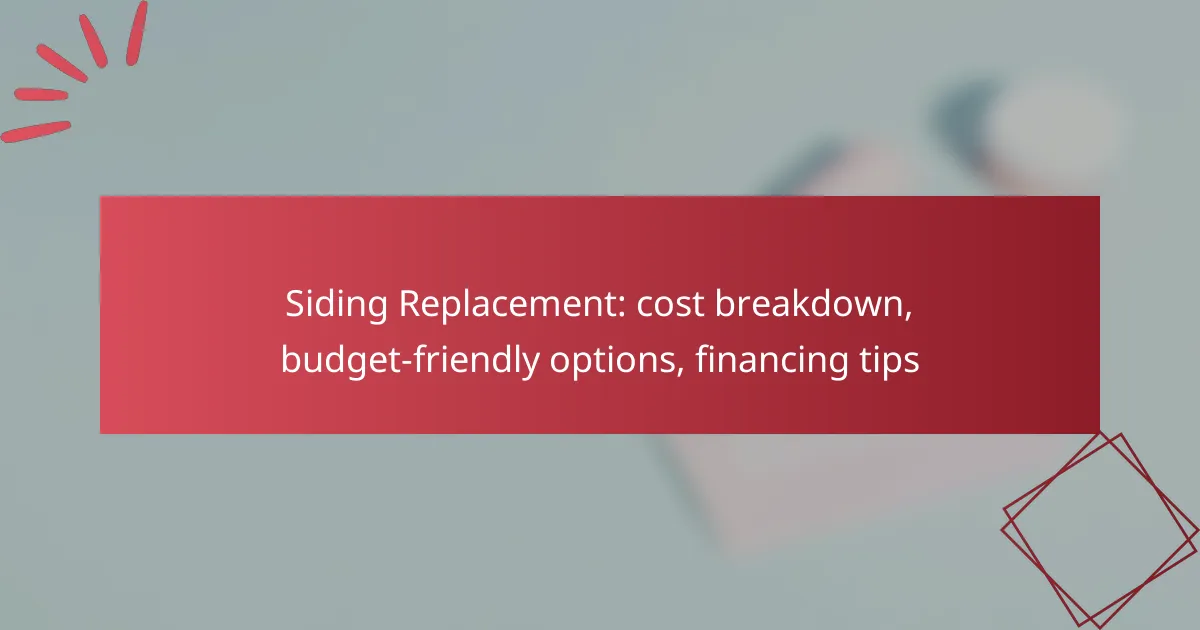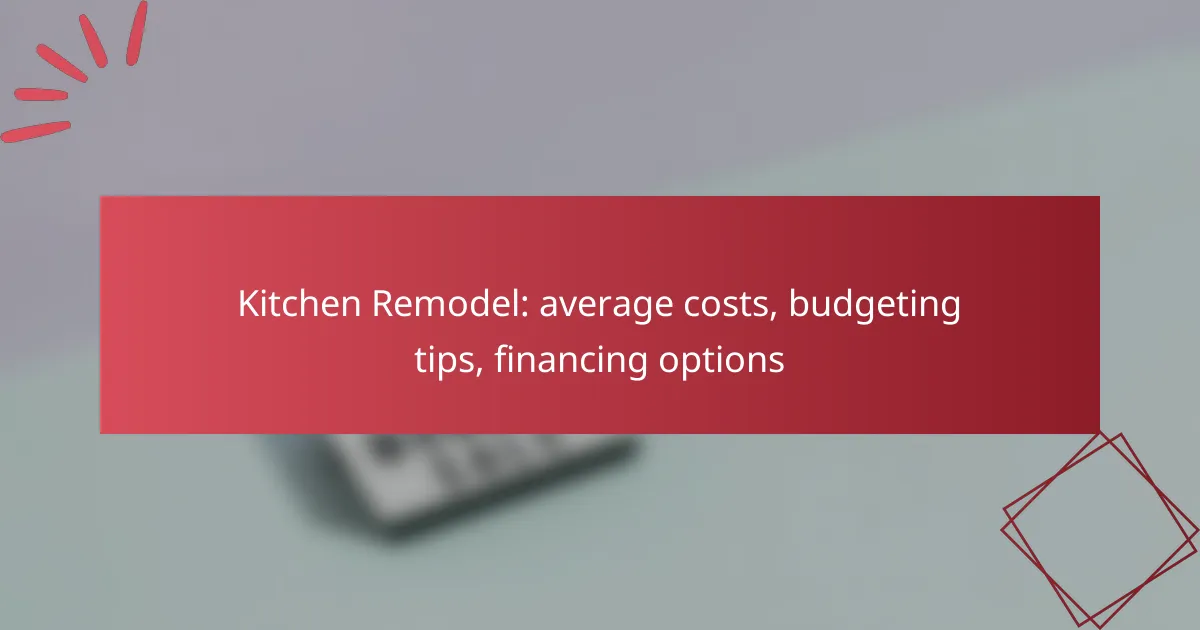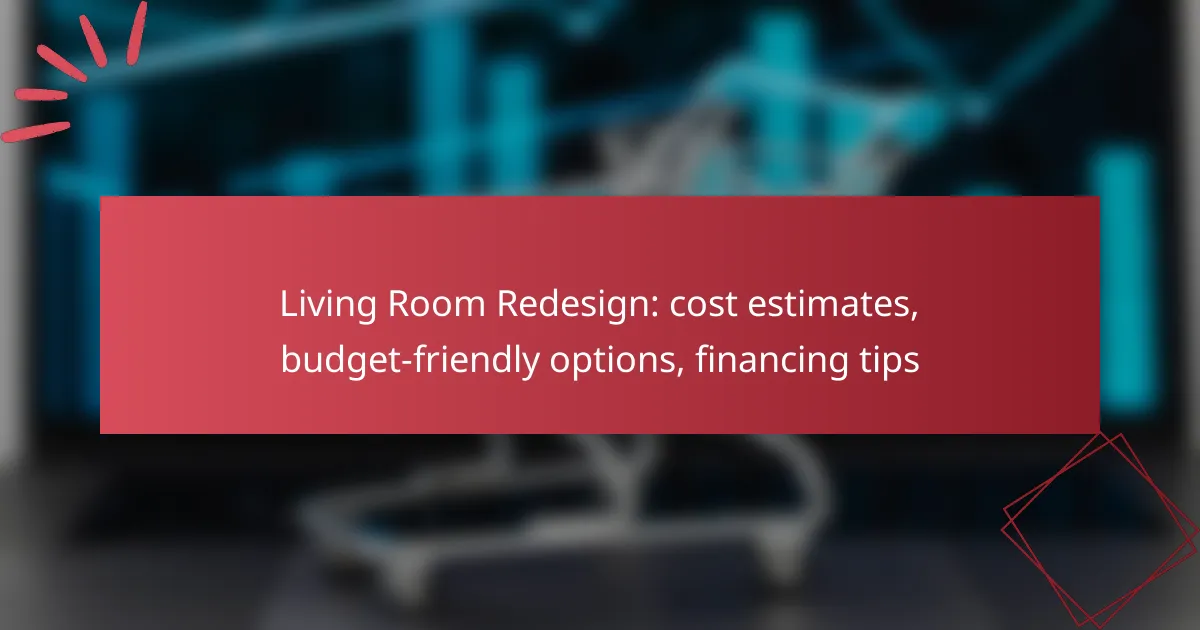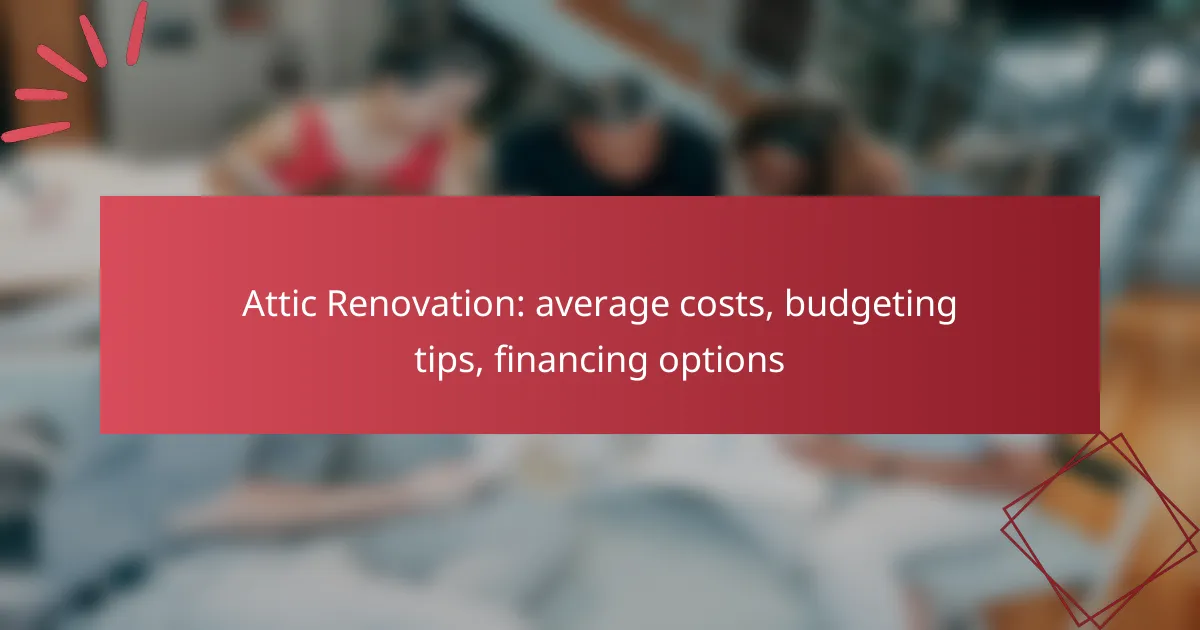Replacing siding can be a significant investment, with costs ranging from several thousand to over ten thousand dollars depending on materials and home size. Homeowners can explore budget-friendly options like vinyl, fiber cement, and wood alternatives to achieve a balance between aesthetics and affordability. Additionally, various financing methods are available to help manage these expenses effectively, making it easier to enhance your home’s exterior without breaking the bank.

What are the costs of siding replacement?
The costs of siding replacement can vary widely based on materials, labor, and project specifics. Homeowners should expect to spend anywhere from several thousand to over ten thousand dollars, depending on the choices made and the size of the home.
Average cost per square foot
The average cost for siding replacement typically ranges from about $3 to $15 per square foot. Vinyl siding is often on the lower end of this spectrum, while materials like wood or fiber cement can be more expensive. Labor costs can add another $1 to $3 per square foot, depending on the complexity of the installation.
Factors affecting total cost
Labor costs can also vary based on location and contractor experience. It’s advisable to obtain multiple quotes to ensure competitive pricing and to consider the reputation and reviews of contractors before making a decision.
Regional cost variations
Siding replacement costs can differ significantly across regions due to labor rates, material availability, and local regulations. For instance, urban areas may have higher labor costs compared to rural locations. Additionally, certain materials may be more readily available in specific regions, affecting their prices.
In the United States, homeowners in the Northeast might pay more for materials like cedar shake siding, while those in the South may find vinyl siding to be more common and affordable. Always research local market conditions to get a clearer picture of expected costs in your area.

What budget-friendly siding options are available?
Budget-friendly siding options include vinyl, fiber cement, and wood alternatives. These materials provide a range of aesthetics and durability while keeping costs manageable for homeowners.
Vinyl siding advantages
Vinyl siding is one of the most popular budget-friendly options due to its affordability and low maintenance requirements. It typically costs between $2 and $7 per square foot, making it an economical choice for many homeowners.
This type of siding is available in various colors and styles, allowing for customization without the need for painting. Additionally, vinyl siding is resistant to rot and insects, which can save on future repair costs.
Fiber cement siding benefits
Fiber cement siding offers a balance between cost and durability, generally ranging from $5 to $10 per square foot. It mimics the appearance of wood or stucco while providing superior resistance to weather and pests.
This option is also fire-resistant and can last for decades with proper maintenance. While the initial investment may be higher than vinyl, its longevity can lead to lower overall costs over time.
Wood siding alternatives
Wood siding can be a more affordable option if sourced from local suppliers or using reclaimed materials. Prices typically range from $3 to $8 per square foot, depending on the type of wood and finish.
While wood provides a classic aesthetic, it requires regular maintenance, such as painting or staining, to prevent rot and insect damage. Homeowners should weigh the initial cost against ongoing upkeep when considering wood siding alternatives.
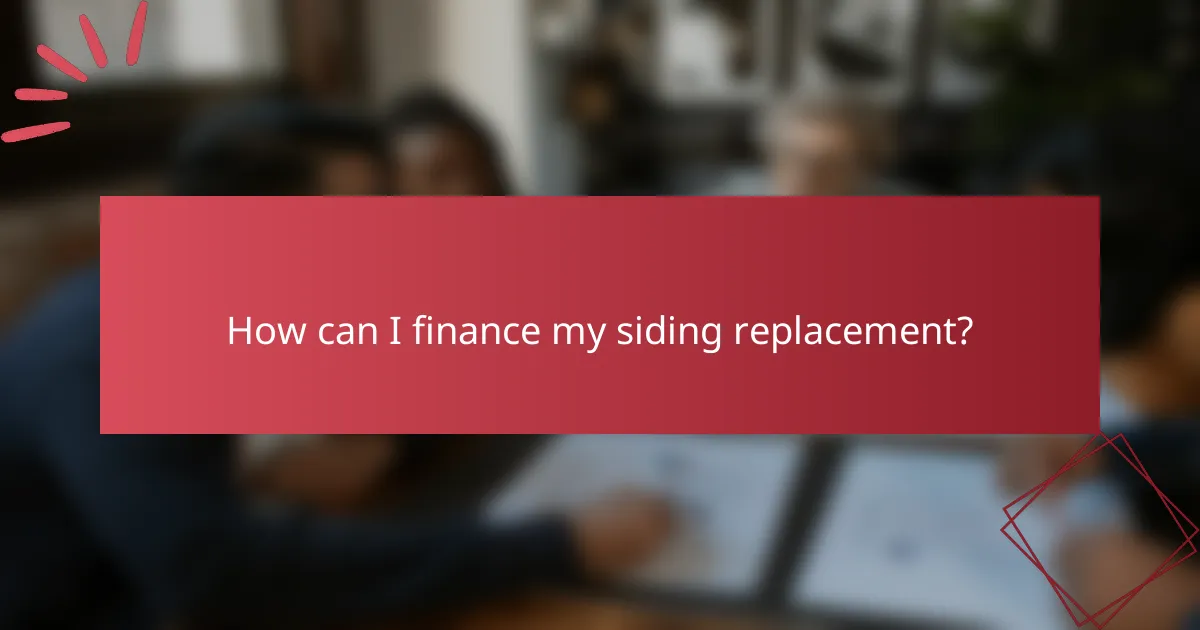
How can I finance my siding replacement?
Financing your siding replacement can be achieved through various options that cater to different financial situations. Understanding these methods will help you choose the best approach to manage costs effectively.
Home improvement loans
Home improvement loans are specifically designed for renovations like siding replacement. These loans typically offer fixed interest rates and can range from a few thousand to tens of thousands of dollars, depending on your creditworthiness and the scope of the project.
When considering a home improvement loan, compare offers from banks, credit unions, and online lenders. Look for favorable terms, such as low interest rates and flexible repayment periods, to ensure you find a loan that fits your budget.
Credit card options
Using a credit card for siding replacement can be a quick solution, especially if you have a card with a low interest rate or a promotional 0% APR offer. This method allows you to pay for the project upfront and spread the cost over time.
However, be cautious of high-interest rates that can accrue if you do not pay off the balance quickly. Aim to pay off the amount within the promotional period to avoid additional costs, and consider the impact on your credit utilization ratio.
Government financing programs
Various government financing programs can assist homeowners with siding replacement, particularly for energy-efficient upgrades. Programs like the FHA Title I Home Improvement Loan or local grants may offer favorable terms and lower interest rates.
Research eligibility requirements and application processes for these programs, as they can vary by location. Additionally, check for any tax credits available for energy-efficient siding, which can further reduce your overall costs.
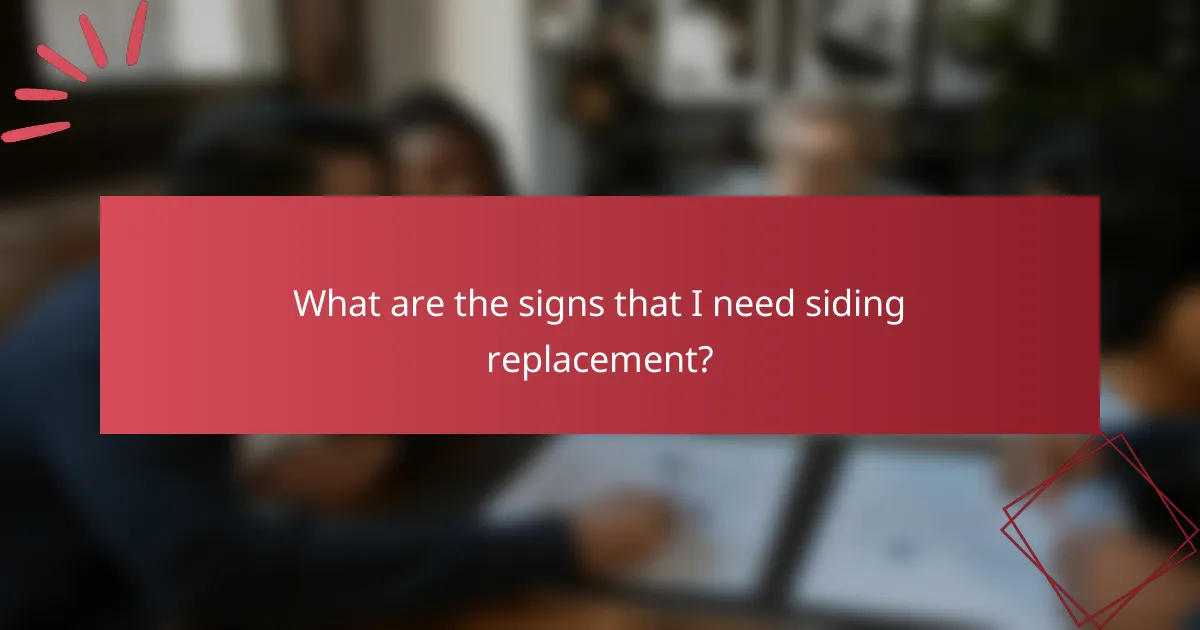
What are the signs that I need siding replacement?
Signs that indicate you need siding replacement include visible damage, energy efficiency issues, and the age of your existing siding. Recognizing these indicators early can help you avoid more extensive repairs and higher costs down the line.
Visible damage indicators
Visible damage to your siding can manifest as cracks, warping, or peeling paint. These issues not only affect the aesthetics of your home but can also lead to moisture intrusion and further structural damage. Regularly inspect your siding for these signs, especially after severe weather events.
If you notice mold or mildew growth on the siding, it may indicate trapped moisture, which can compromise the material. Additionally, if you see gaps or holes, it’s essential to address these immediately to prevent pests from entering your home.
Energy efficiency concerns
Energy efficiency concerns often arise when you experience fluctuating indoor temperatures or higher energy bills. If your siding is not properly insulated or has deteriorated, it can lead to significant heat loss in winter and heat gain in summer, causing your HVAC system to work harder.
Consider conducting an energy audit to identify areas where your siding may be lacking. If you find that your home is not retaining heat or cool air effectively, it may be time to replace the siding to improve energy efficiency.
Age of existing siding
The age of your existing siding is a crucial factor in determining whether replacement is necessary. Most siding materials, such as vinyl or wood, have a lifespan of 20 to 40 years, depending on maintenance and environmental conditions. If your siding is approaching or exceeding this age, it’s wise to evaluate its condition.
Older siding may not only be less effective at protecting your home but may also be out of compliance with current building codes or energy efficiency standards. If your siding is aging, consider planning for replacement to ensure your home remains safe and energy-efficient.

How do I choose the right siding contractor?
Choosing the right siding contractor involves evaluating their experience, qualifications, and customer feedback. A good contractor will not only provide quality workmanship but also ensure compliance with local building codes and regulations.
Key qualifications to look for
When selecting a siding contractor, focus on their licensing, insurance, and experience in the industry. Verify that they hold the necessary licenses required in your area and have adequate liability insurance to protect you from potential damages during the project.
Additionally, consider their experience with the specific type of siding you want to install, whether it’s vinyl, wood, or fiber cement. Contractors with a proven track record in your preferred material are more likely to deliver satisfactory results.
Questions to ask potential contractors
Prepare a list of questions to gauge the contractor’s expertise and reliability. Ask about their previous projects, timelines for completion, and the materials they recommend. Inquire about their warranty policies and what kind of post-installation support they offer.
It’s also beneficial to ask for a detailed written estimate that outlines labor costs, material expenses, and any additional fees. This transparency helps you avoid unexpected charges later on.
Importance of reviews and references
Reviews and references are crucial in assessing a contractor’s reputation. Look for online reviews on platforms like Google or Yelp, and pay attention to both positive and negative feedback to get a balanced view of their performance.
Request references from past clients and follow up with them to ask about their experience. A reputable contractor should have no problem providing you with contact information for satisfied customers who can vouch for their work quality and professionalism.
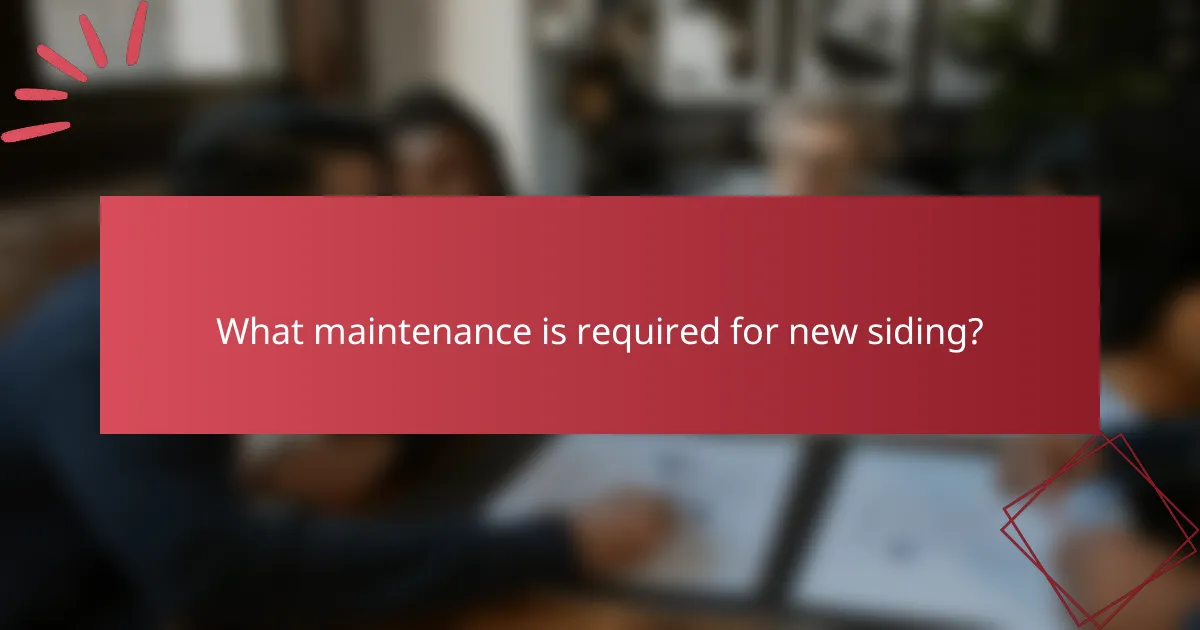
What maintenance is required for new siding?
New siding requires minimal maintenance to ensure its longevity and appearance. Regular cleaning and periodic inspections are essential to prevent damage and maintain its protective qualities.
Cleaning recommendations
To keep your siding looking fresh, clean it at least once a year. Use a mixture of mild detergent and water, applying it with a soft brush or cloth to avoid scratches. For tougher stains, a pressure washer set to a low pressure can be effective, but be cautious to avoid damaging the material.
Different siding materials may have specific cleaning needs. For instance, vinyl siding is generally easier to clean than wood siding, which may require more careful treatment to prevent rot or mold. Always check the manufacturer’s guidelines for the best cleaning practices.
Inspection frequency
Inspect your siding at least twice a year, ideally in spring and fall. Look for signs of wear, such as cracks, warping, or discoloration, which can indicate underlying issues. Early detection of problems can save you from costly repairs down the line.
In addition to seasonal inspections, pay attention to any changes after severe weather events. Heavy rain, snow, or strong winds can cause damage that may not be immediately visible. Addressing these issues promptly can help maintain the integrity of your siding.
